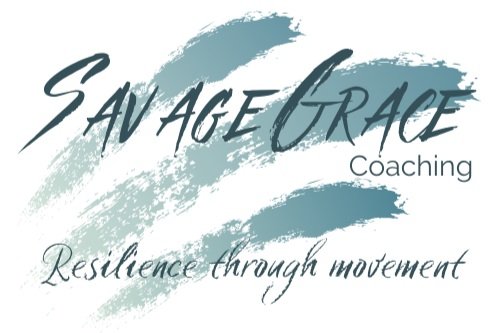Bringing the Burn Without the Burnout: 3 stress navigation skills for fit pros
Transcript
Last week on the podcast we talked to burnout expert Dr. Kate Steiner and she really stirred a lot of great things up. She talked about stress that snowballs into burnout as “burn events”. What’s more of a burn event than a boot camp class, kickboxing or hiit. Especially when you’re the one standing up in front of those classes.
As many of you know, I’ve spent a lot of time - my whole career in the fitness industry teaching and training and bringing all kinds of movement opportunities to my community wherever I lived.
And no doubt, being a fitness professional is a great gig. As a career it checks all the boxes, especially if you're a woman or the main caregiver in your household. It’s flexible. It lets you be as creative as you want to be. You get to help people. You can make it fit pretty much any lifestyle. You get to wear yoga pants every day. And from the outside it seems like the dream job.
But it’s still a demanding profession. More demanding that you might think at the start. We all start out as independent contractors for the most part. If you’re like me I started with one class a week. That jumped to 3 classes a week, then 3 at 2 different facilities and so on. A slow but steady snowball that picked up pace on par with my collection of certifications.
So what started out as a hobby that let me get paid to do a workout I wanted to do anyway, because let’s face it that’s always a little bit of why we like this business, turns into what looks more like the activity level of a professional athlete.
I figured it out one time, there was a point where I was doing the equivalent of 3 ½ marathons a week. And there is nothing wrong with working that much as long as you are building in balanced recovery to support it.
That’s one of the biggest takeaways from last week's episode on burnout. This idea of rolling recovery throughout your day.
I never did that, or never did enough of that. And as a result I left the door open for some pretty serious burnout, physically, mentally and emotionally.
I loved Dr. Kate’s definition of burnout she said…
“burnout is really characterized by three things beyond the fatigue, feeling emotionally drained, feeling overwhelmed; those pieces are part of burnout. But when you are waking up more days of the week than not, and you feel as though your work is unmanageable, or that your work is a burden, or that you have lost the joy and passion that you previously had for your work. You're likely in a state of burnout. “
I remember intuitively doing some of the things to prepare for my week of burn events ( or classes). I would sit down on Sunday evening and lay out my classes for the week in a notebook. Monday through Friday or Saturday, morning and evening. First by focus of the class and then by format. And because I didn’t want to reinvent the wheel for every class at every facility I started to repeat certain classes but I needed to make sure I wasn’t doing the same class or body parts back to back all day long.
And I vividly remember how my body felt as I did this each week. It felt like I was literally and figuratively taking a deep breath before diving underwater Monday morning, promising myself that I could come up for air on friday.
Keep in mind that I, like many many group fitness instructors, was still the main caregiver in my house. Kids needed to be fed, gotten to school, sports, scouts, church activities, dinner needed to be planned because I was often teaching evenings. I did all that stuff. I felt like I had to.
Now don’t get me wrong, I had a big chunk of time in the middle of my day, when the kids were at school and I didn’t have classes where I could rest and “recover” before starting my evening schedule. But I was too exhausted most days to do anything other than collapse on the couch, which made me feel lazy. I actually remember days where it was simply too hard to make myself lunch.
And boy let me tell you that is a slippery slope. That lack of nutritional support caused some really serious issues for me that lasted years but I think I’ll save that for another podcast.
Anyway I was exhausted all the time, I had classic stress injury symptoms. Insomnia, lack of appetite, gut issues, hormone dysregulation (I was in my mid 30’s and had constant night sweats and crazy mood swings and depressive behavior).
I had turned to supplements to boost my energy to make it through my day. Back then ephedra was all the rage and for me at first it felt great. But very quickly I realized it was driving me and raising this deep aggression. It felt like I was always strapped to the front of a freight train going full steam ahead.
And then one day, when we were all sitting down to dinner, My daughter said something that woke me up. She said “Mommy never smiles.”
Talk about a gut punch.
I knew I wasn’t being my best self. How could I be? I’m not sure I’d ever met my best self. And I was so dysregulated I couldn’t see how my state was affecting my family. But I didn’t really know how to fix it. I didn’t know how to back off and reset. But I knew something had to change.
I truly believe in divine timing. And sometimes the universe, god, your guardian angels, they can really pull some strings for you. It wasn’t long after that that we ended up moving to a new state and I took that opportunity to do things differently.
That move forced a break. It forced a recovery. A long enough break for me to correct some things and get my priorities straighter, if not straight.
And what I learned from that time is that when you stand up in front of a class to lead any format, you are in a uniquely powerful position. You are there to influence the people in the room hopefully for the better. You’re a guide for them not a performer. You’re a real person who deserves every bit as much care as everyone else there. Whether you realize it or not you’re modeling what good boundaries are, you’re modeling balanced fitness, you’re modeling balanced health.
So much of what's celebrated in the fitness industry is based on what the eyes can see. Arms, abs, ass. We see pictures of cut women and men on slick Instagram posts and it’s easy to get sucked in. We think if we look like that we can get more followers or we’ll have more gravitas because we’re so obviously “walking the walk”. But are they?
Do they smile when the cameras aren’t there?
We can still bring the burn for our students without sinking into burnout ourselves. Part of the process is learning to navigate our own stress curve better so then we can help our students.
One part of that navigation process is to begin to integrate an understanding of our nervous system into our class design.
No matter what your format is you are tapping into the nervous system, specifically the autonomic nervous system in order to find some health result. Because as we all know if you want the body to change in some way we have to ask it for more than what it can already do. Many many of our students step into our classes with a desire to lower their stress level but choose formats that ultimately add to it because they don’t understand the body’s language.
But we do. We know that opposites create balance. We know that building resilience isn’t being able to stay in a highly activated state for longer, it's being able to come back down, quickly and easily. And in order to do those things we need to offer opportunities to practice those things within our class structure. Not just for our students but for us as well.
There is an energy exchange in any format of group fitness from yoga to Zumba to HIIT if you allow yourself to receive it. It’s not just you giving, giving, giving. So here are some ways you can integrate recovery for both yourself and your students using some basic stress navigation skills.
Ritualize the beginning and end of your classes, for yourself (how you prepare, center and ground) and for your students, with a check in or intro or opening series.
Encourage some connection either between you and them (through your check in or sharing experience of the class) or between participants (partner work, introductions)
Integrate final recovery in every format. A repeatable series of stretches while talking, final relaxation of at least 5 minutes, guided meditation. Explain the neuroscience of recovery at the level of the neurons.
Some formats, like yoga naturally include these things but what’s often missing is intention. Why do we have to “waste 5 minutes just laying here at the end of class. Well it turns out your nervous system needs that time. In fact it’s craving that time and if we could just back off a minute we could recover more fully and at a deeper level and be able to finally get those results that have been eluding us for so long.
I’ve never heard a single group fitness instructor explain that over the years. Recovery is where all the magic happens. We know this. We can't expect our students to know it when their idea of calm is the same as collapse.
We are all susceptible to burnout. Sometimes it’s only in one area of our lives but it is a part of our experience. And because of that we all need to consider ways to recover no matter what our burn events are.
I’ve created a free resource for you whether you’re a fitness professional or simply a health conscious caregiver that will help you hold space for yourself and for your people. You can get my free guide to holding space if you go to elementalkinetics.com. By signing up you will also get access to my weekly newsletter and first look at all my upcoming offers. I hope you’ll check it out. I'd love to welcome you into my community.
I want to thank you for listening and being a part of The Work IN. I am so grateful for you and if you have found this podcast to be helpful in any way I’d love it if you could leave us a 5 star review on apple podcasts it helps others find us!
Hi there!
I’m your highly caffeinated host! Thank you for taking the time to visit!
I’m the owner and founder of Elemental Kinetics online trauma release studio. As a refugee from the body brand nation and host of the podcast The Work IN, I offer mentorship and professional perspectives to help fitness professionals and wellness educators who want to set themselves apart using a creative, trauma sensitive approach so that they can get lasting results for their clients and avoid burnout for themselves.
You can get started right now! Click the button below and sign up to download you free guide to the 5 elements to create trauma sensitive classes today.


